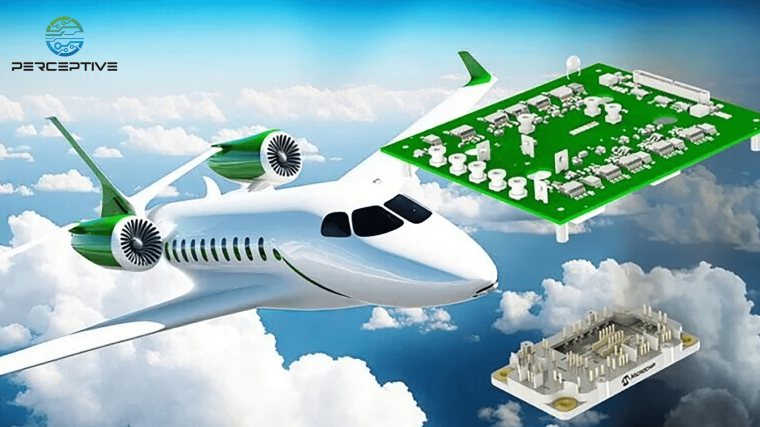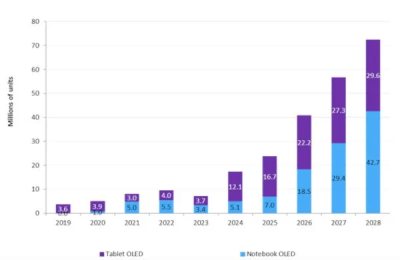- FAVORITES
- News Feed Invite FB Friends
- EXPLORE
- Pages
- Groups
- Events
- Blogs
- Marketplace
- Jobs
- Developers
- Lives in Guangdong, 中国
- From Shenzhen
- Other
- 10/04/1990
- Followed by 1 people
Change Language
 English - Change Language
English - Change Language Recent Updates
- IC Chip Reliability Test to Guarantee Quality and Improve Products 👇 https://www.perceptive-ic.com/news-detailed/IC-Chip-Reliability-Test-to-Guarantee-Quality-and-Improve-ProductsIC Chip Reliability Test to Guarantee Quality and Improve Products 👇 https://www.perceptive-ic.com/news-detailed/IC-Chip-Reliability-Test-to-Guarantee-Quality-and-Improve-ProductsWWW.PERCEPTIVE-IC.COMIC Chip Reliability Test to Guarantee Quality and Improve ProductsReliability testing is especially important for IC chip components because they are widely used in various critical systems such as automotive, aerospace, and medical devices.0 Comments 0 SharesPlease log in to like, share and comment!
- Finding ObsoleteICs and Components: Challenges and Strategies In the fast-moving semiconductor Integrated Circuit industry, many companies often face a challenge: how to find and buy obsolete chips. It's a complex and challenging process, but it's a necessary step for many manufacturers and repair service suppliers. The Challenge of Sourcing Integrated Circuits The ability to find these chips and components is a primary concern as they have been discontinued. Even if they are found, the price may be higher. In addition, quality and authenticity are important issues. Counterfeit and substandard products can be purchased at any time, and many distributors do not have dedicated componenttesting teams to test and identify chip availability and whether they are counterfeit or substandard. ReliableComponentDistributor: Perceptive Components Limited Perceptive is a specialized electronic component distributor, one of the largest supply platforms for shortage and hard-to-find part sources, with a dedicated chip testing team. Our mission is to help our customers solve their supply chain challenges and ensure they have access to the genuine components they need. 👉 learn more: https://www.perceptive-ic.com/Finding ObsoleteICs and Components: Challenges and Strategies In the fast-moving semiconductor Integrated Circuit industry, many companies often face a challenge: how to find and buy obsolete chips. It's a complex and challenging process, but it's a necessary step for many manufacturers and repair service suppliers. The Challenge of Sourcing Integrated Circuits The ability to find these chips and components is a primary concern as they have been discontinued. Even if they are found, the price may be higher. In addition, quality and authenticity are important issues. Counterfeit and substandard products can be purchased at any time, and many distributors do not have dedicated componenttesting teams to test and identify chip availability and whether they are counterfeit or substandard. ReliableComponentDistributor: Perceptive Components Limited Perceptive is a specialized electronic component distributor, one of the largest supply platforms for shortage and hard-to-find part sources, with a dedicated chip testing team. Our mission is to help our customers solve their supply chain challenges and ensure they have access to the genuine components they need. 👉 learn more: https://www.perceptive-ic.com/WWW.PERCEPTIVE-IC.COMPerceptive Components: Obsolete Electronic Components DistributorPerceptive Components has a professional team looking for obsolete electronic components. We have persisted in this matter for 10 years, and have passed strict inspections and entered our inventory to serve customers at any time.0 Comments 0 Shares
- In recent years, artificial intelligence (AI), high-performance computing (HPC) and PCs have been driving the development of high-performance DRAM products, and the market demand for HBM products is growing rapidly, with the three major memory makers, Samsung, SK Hynix and Micron, all increasing their investments. SK Hynix, the current leader in HBM, appeared at COMPUTEX 2024 for the first time, showcasing its latest HBM3E and MR-RUF technologies, stating that hybrid bonding will play a crucial role in chip stacking. In contrast, Samsung and Micron use TC NCF technology, which requires high temperature and pressure to solidify and then melt the material, followed by cleaning. This process involves 2–3 steps, while MR-RUF technology can complete the entire process in one step without cleaning. According to SK Hynix, the thermal conductivity of MR-RUF is approximately twice that of TC NCF, significantly affecting production speed and yield. SK Hynix’s claim seems very convincing in light of its current market share. SK Hynix revealed that in future chip stacks, bumps will be eliminated and a special material will be used to fill and connect the chips. This material, which is similar to a liquid or glue, will provide heat dissipation and chip protection, resulting in thinner overall chip stacks. SK Hynix is very optimistic that hybrid bonding technology has the potential to achieve stacks of more than 20 layers at no more than 775 micrometers without the need to move to a new process. There is a need for memory components, you can contact Perceptive.In recent years, artificial intelligence (AI), high-performance computing (HPC) and PCs have been driving the development of high-performance DRAM products, and the market demand for HBM products is growing rapidly, with the three major memory makers, Samsung, SK Hynix and Micron, all increasing their investments. SK Hynix, the current leader in HBM, appeared at COMPUTEX 2024 for the first time, showcasing its latest HBM3E and MR-RUF technologies, stating that hybrid bonding will play a crucial role in chip stacking. In contrast, Samsung and Micron use TC NCF technology, which requires high temperature and pressure to solidify and then melt the material, followed by cleaning. This process involves 2–3 steps, while MR-RUF technology can complete the entire process in one step without cleaning. According to SK Hynix, the thermal conductivity of MR-RUF is approximately twice that of TC NCF, significantly affecting production speed and yield. SK Hynix’s claim seems very convincing in light of its current market share. SK Hynix revealed that in future chip stacks, bumps will be eliminated and a special material will be used to fill and connect the chips. This material, which is similar to a liquid or glue, will provide heat dissipation and chip protection, resulting in thinner overall chip stacks. SK Hynix is very optimistic that hybrid bonding technology has the potential to achieve stacks of more than 20 layers at no more than 775 micrometers without the need to move to a new process. There is a need for memory components, you can contact Perceptive.0 Comments 0 Shares
- What to do when your chipset reaches #endoflife? Don't panic! As a professional #distributor of electronic components, we provide you with one-stop solutions. #Perceptive often focuses on discontinued materials from Micron, Renesas, and other brands, with continued availability from stock. We will do our best to source the required #OEM according to the customer's needs. However, if the OEM parts are out of stock, we can provide alternatives, such as other brands of replacement materials or Chinese-made alternatives, all of which will be determined according to the customer's budget and needs. #ObsoleteParts #ICWhat to do when your chipset reaches #endoflife? Don't panic! As a professional #distributor of electronic components, we provide you with one-stop solutions. #Perceptive often focuses on discontinued materials from Micron, Renesas, and other brands, with continued availability from stock. We will do our best to source the required #OEM according to the customer's needs. However, if the OEM parts are out of stock, we can provide alternatives, such as other brands of replacement materials or Chinese-made alternatives, all of which will be determined according to the customer's budget and needs. #ObsoleteParts #IC0 Comments 0 Shares
- The procurement plays a critical role in today's highly competitive electronic components industry. Faced with the challenges posed by an increasingly complex supply chain and rapidly changing technology, procurement teams are constantly looking for solutions to ensure that their organizations have access to quality, reliable electronic components and manage costs in the most efficient manner. Cultivating long-term suppliers is a strategic step in this process, as they can bring many important benefits to the organization. The procurement plays a critical role in today's highly competitive electronic components industry. Faced with the challenges posed by an increasingly complex supply chain and rapidly changing technology, procurement teams are constantly looking for solutions to ensure that their organizations have access to quality, reliable electronic components and manage costs in the most efficient manner. Cultivating long-term suppliers is a strategic step in this process, as they can bring many important benefits to the organization. Here's the full article: https://www.perceptive-ic.com/news-detailed/Why-Do-Electronic-Components-Procurement-Departments-Need-to-Cultivate-Long-Term-Cooperative-SuppliersThe procurement plays a critical role in today's highly competitive electronic components industry. Faced with the challenges posed by an increasingly complex supply chain and rapidly changing technology, procurement teams are constantly looking for solutions to ensure that their organizations have access to quality, reliable electronic components and manage costs in the most efficient manner. Cultivating long-term suppliers is a strategic step in this process, as they can bring many important benefits to the organization. The procurement plays a critical role in today's highly competitive electronic components industry. Faced with the challenges posed by an increasingly complex supply chain and rapidly changing technology, procurement teams are constantly looking for solutions to ensure that their organizations have access to quality, reliable electronic components and manage costs in the most efficient manner. Cultivating long-term suppliers is a strategic step in this process, as they can bring many important benefits to the organization. Here's the full article: https://www.perceptive-ic.com/news-detailed/Why-Do-Electronic-Components-Procurement-Departments-Need-to-Cultivate-Long-Term-Cooperative-SuppliersWWW.PERCEPTIVE-IC.COMWhy Do Electronic Components Procurement Departments Need to Cultivate Long Term Cooperative SuppliersAt the same time, in the field of electronic components procurement, what are the specific methods to cultivate long-term cooperative suppliers?0 Comments 0 Shares
- #Apple developed a 10-core #CPU with up to 28 billion transistors for its latest #iPad design. Apple #M4 features a new #10coreCPU design with up to 28 billion transistors. It's built on #TSMC's #N3E second-generation 3nm process technology for improved power efficiency.#Apple developed a 10-core #CPU with up to 28 billion transistors for its latest #iPad design. Apple #M4 features a new #10coreCPU design with up to 28 billion transistors. It's built on #TSMC's #N3E second-generation 3nm process technology for improved power efficiency.1 Comments 0 Shares
- #Microchip introduces a new integrated #drivepower solution that combines a companion #gatedriver board with our extended hybrid power drive (#HPD) modules in silicon carbide or silicon technology, ranging from 5 kVA to 20 kVA. The new #integrateddrivepowersolution maintains the same footprint regardless of power output. Mating #gatedriveboards are designed to integrate with Microchip's HPD modules to provide an all-in-one motor drive solution for the electrification of systems such as #flightcontrol, braking and landing gear. Microchip's power solutions are designed to scale with the requirements of the end-use application, from small drive systems for UAVs to high-power drive systems for electric vertical takeoff and landing (#eVTOL) aircraft, MEAs and all-electric aircraft. #semiconductor #avionicsindustry #Avionic #perceptive #SiC #electroniccomponents #electronics#Microchip introduces a new integrated #drivepower solution that combines a companion #gatedriver board with our extended hybrid power drive (#HPD) modules in silicon carbide or silicon technology, ranging from 5 kVA to 20 kVA. The new #integrateddrivepowersolution maintains the same footprint regardless of power output. Mating #gatedriveboards are designed to integrate with Microchip's HPD modules to provide an all-in-one motor drive solution for the electrification of systems such as #flightcontrol, braking and landing gear. Microchip's power solutions are designed to scale with the requirements of the end-use application, from small drive systems for UAVs to high-power drive systems for electric vertical takeoff and landing (#eVTOL) aircraft, MEAs and all-electric aircraft. #semiconductor #avionicsindustry #Avionic #perceptive #SiC #electroniccomponents #electronics0 Comments 0 Shares
- According to #AdroitMarketResearch, the #wirelessbridgemarket size is expected to reach USD 4,450.9 million by 2028, growing at a CAGR of 12.7% from 2022 to 2028. The #wireless bridges market plays a vital role in the wider wireless communication sector by facilitating seamless and secure connectivity between different networks. This innovative technology allows connecting multiple wireless networks, thereby improving communication and data transfer capabilities. The growing demand for reliable and high-performance network connectivity across various industries such as #IT, #telecom, #industrial, #residential, and #commercial sectors underscores its importance. The expansion of this market is primarily driven by the increasing use of Internet-connected devices and growing demand for effective network infrastructure solutions. #electronicsIndustry #semiconductor #electroniccomponents #perceptive #electronics #technologyelectronics #chipmarketAccording to #AdroitMarketResearch, the #wirelessbridgemarket size is expected to reach USD 4,450.9 million by 2028, growing at a CAGR of 12.7% from 2022 to 2028. The #wireless bridges market plays a vital role in the wider wireless communication sector by facilitating seamless and secure connectivity between different networks. This innovative technology allows connecting multiple wireless networks, thereby improving communication and data transfer capabilities. The growing demand for reliable and high-performance network connectivity across various industries such as #IT, #telecom, #industrial, #residential, and #commercial sectors underscores its importance. The expansion of this market is primarily driven by the increasing use of Internet-connected devices and growing demand for effective network infrastructure solutions. #electronicsIndustry #semiconductor #electroniccomponents #perceptive #electronics #technologyelectronics #chipmarket0 Comments 0 Shares
- The market for mobile PCs with organic light-emitting diode (OLED) displays is expected to more than double by 2024 and continue to climb through 2028, Omdia said. The market researcher expects to ship 3.7 million tablets and 3.4 million laptops with OLED displays in 2023; a total of 7.1 million. Omdia expects the number of tablets with OLED displays to increase to 12.1 million by 2024, and the number of laptops to reach 5.1 million, for a total of 17.2 million units. This growth will continue through 2028, when 72.3 million tablets and laptops will be shipped, but penetration in the overall mobile PC display market will still be only 14 percent. Still, Omdia is looking at 2024 as a transition year as Apple adopts OLED displays on mobile PCs. The iPadPro with OLED display will launch in 2024. Samsung's hybrid OLED displays will be produced at its Gen 6 plants, with LG Display's E6 Gen 6 flexible OLED plant and Samsung Display's A3 Gen 6 flexible OLED plant being used for mass production. Both plants were originally designed for smartphone display applications, but were modified to facilitate larger panel production. Omdia believes that Apple now plans to expand OLED displays to the iPadAir and MacBookPro in 2026 and to the iPadMini and MacBookAir in 2027. The high price of high-performance displays is why Apple first introduced OLEDs in its high-end products, but prices are expected to come down as sales increase, allowing the improved displays to be used in a wider range of products. If you are interested in electronic components, you can visit: https://www.perceptive-ic.com/.The market for mobile PCs with organic light-emitting diode (OLED) displays is expected to more than double by 2024 and continue to climb through 2028, Omdia said. The market researcher expects to ship 3.7 million tablets and 3.4 million laptops with OLED displays in 2023; a total of 7.1 million. Omdia expects the number of tablets with OLED displays to increase to 12.1 million by 2024, and the number of laptops to reach 5.1 million, for a total of 17.2 million units. This growth will continue through 2028, when 72.3 million tablets and laptops will be shipped, but penetration in the overall mobile PC display market will still be only 14 percent. Still, Omdia is looking at 2024 as a transition year as Apple adopts OLED displays on mobile PCs. The iPadPro with OLED display will launch in 2024. Samsung's hybrid OLED displays will be produced at its Gen 6 plants, with LG Display's E6 Gen 6 flexible OLED plant and Samsung Display's A3 Gen 6 flexible OLED plant being used for mass production. Both plants were originally designed for smartphone display applications, but were modified to facilitate larger panel production. Omdia believes that Apple now plans to expand OLED displays to the iPadAir and MacBookPro in 2026 and to the iPadMini and MacBookAir in 2027. The high price of high-performance displays is why Apple first introduced OLEDs in its high-end products, but prices are expected to come down as sales increase, allowing the improved displays to be used in a wider range of products. If you are interested in electronic components, you can visit: https://www.perceptive-ic.com/.0 Comments 0 Shares
- The microprocessor market size is expected to exceed USD 72 billion by 2022 and is projected to grow at a CAGR of 7.6% from 2023 to 2032, reaching an estimated value of USD 142 billion. The rapid growth in the usage of portable medical devices across the globe is driving the market. According to a recent market study, Asia Pacific is expected to have a significant impact on the global microprocessor industry. This is mainly attributed to the growing demand for consumer electronics, rapid industrial development, and large presence of leading semiconductor manufacturers in countries/regions such as China, South Korea, and Taiwan. Together, these factors have consolidated the region’s strong position in the microprocessor sector. The leading player in the global microprocessor market is the Complex Instruction Set Computer (CISC) technology, which is widely recognized for its ability to handle complex instructions efficiently. The technology is popular across industries for its versatility in performing multiple functions and is well suited for multifunctional applications. The major advantage of CISC technology is its wide instruction range and efficient utilization of memory, making it a preferred choice for general-purpose computing needs. Hence, CISC technology is expected to hold the largest market share in the global microprocessor industry. For more exciting articles, please click perceptive-ic.com.The microprocessor market size is expected to exceed USD 72 billion by 2022 and is projected to grow at a CAGR of 7.6% from 2023 to 2032, reaching an estimated value of USD 142 billion. The rapid growth in the usage of portable medical devices across the globe is driving the market. According to a recent market study, Asia Pacific is expected to have a significant impact on the global microprocessor industry. This is mainly attributed to the growing demand for consumer electronics, rapid industrial development, and large presence of leading semiconductor manufacturers in countries/regions such as China, South Korea, and Taiwan. Together, these factors have consolidated the region’s strong position in the microprocessor sector. The leading player in the global microprocessor market is the Complex Instruction Set Computer (CISC) technology, which is widely recognized for its ability to handle complex instructions efficiently. The technology is popular across industries for its versatility in performing multiple functions and is well suited for multifunctional applications. The major advantage of CISC technology is its wide instruction range and efficient utilization of memory, making it a preferred choice for general-purpose computing needs. Hence, CISC technology is expected to hold the largest market share in the global microprocessor industry. For more exciting articles, please click perceptive-ic.com.0 Comments 0 Shares
More Stories









